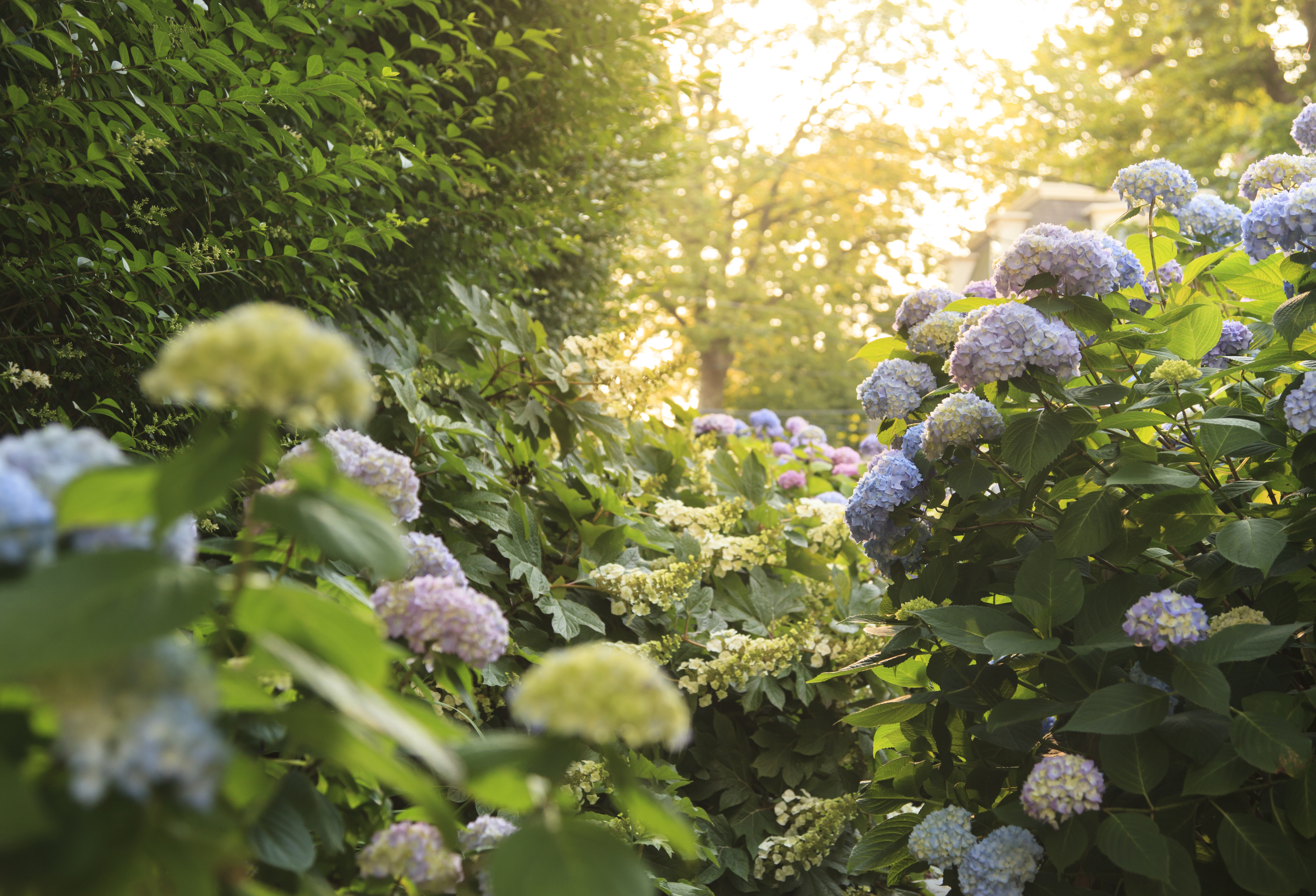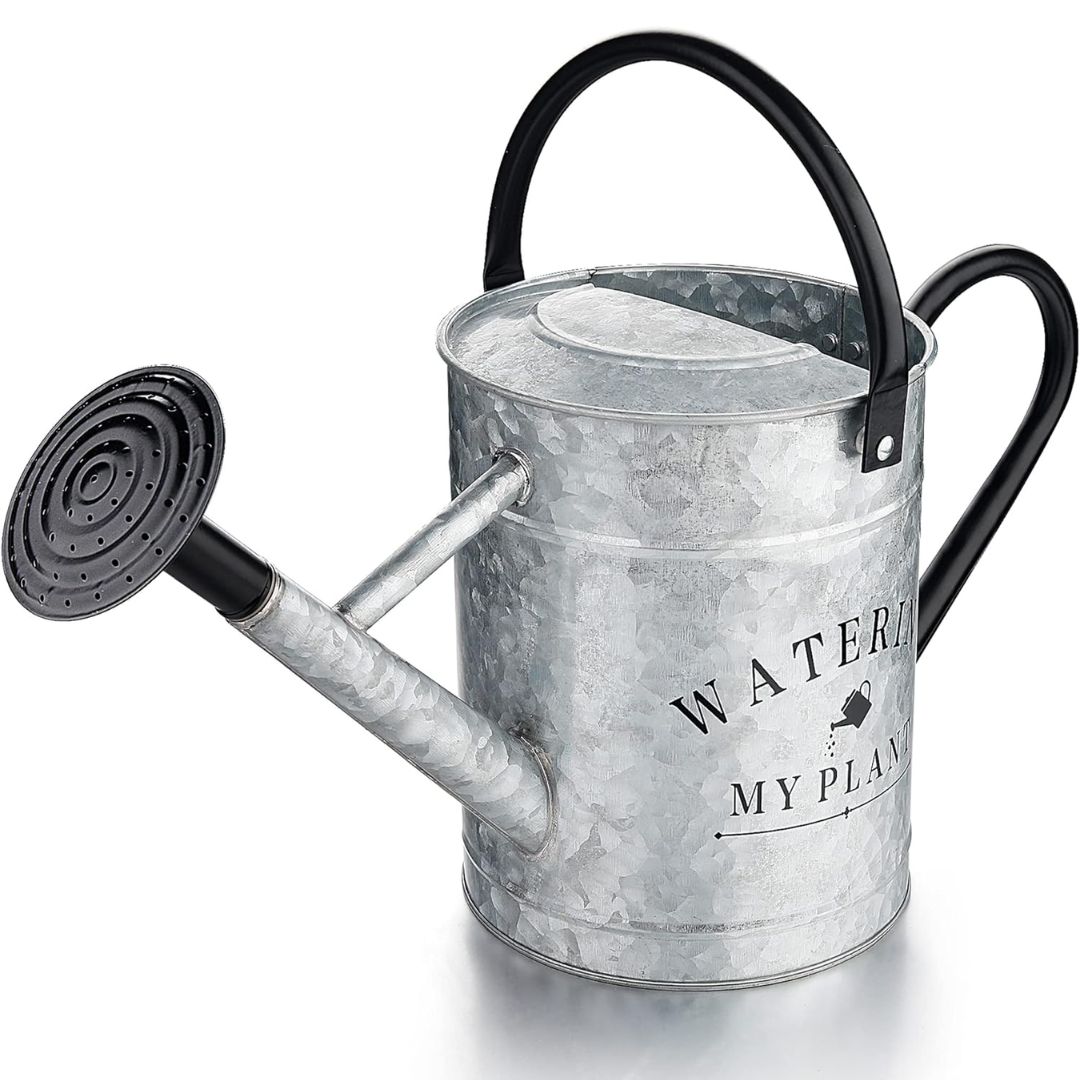5 Things People Who Have Perfect Hydrangeas Want You to Know About Looking After Your Plants
Hydrangeas are the perfect blooms for the summer season — here are some expert tips and tricks on how to take extra care of your loved backyard plants


A peaceful garden is one that is well groomed, maintained and cared for. If you're a plant lover, it can be quite the task to take care of natures beauties, but in doing so, you'll find that your backyard has blossomed into a life you've always wanted. In the words of landscape architect, William Kent, 'garden as though you will live forever'.
There are many beautiful summer flowers you can choose from, but one that I have always been quite fond of, is the ever so abundant hydrangea. These blooms will add an eccentric feel and colorful touch to your backyard. Hydrangeas, also known as the Hortensia, come in more than 70 species — native to the Americas and Asia. The pillowy flowers also come in an array of shades and are known to be one of the most popular garden plants due to its unique look.
Thinking of adding these blooms to your collection of garden plants? These are the things people who grow them successfully, whether in flower beds or if you're looking for potted hydrangea care.
The best way to take care of Hydrangeas

Paris Lalicata, plant expert from The Sill tells us hydrangeas are quite popular as flowers that bloom in the summer due to their 'vibrant, lush flowers that add an instant pop of color sure to elevate any space'. These blooms are also 'long-lasting' and quite 'low-maintenance,' which Paris says is a perfect choice 'for both novice and experienced gardeners'.
But just like any other living plant, hydrangeas can sometimes go through moments of uncertainty, so applying extra measures to take care of your outdoor plants is a must.
Tony O'Neill, expert gardener from Simplifying Gardening, says you should take extra care during the summer season and follow these steps.
1. You need to plant them in the right place

It's important to plant hydrangeas in an area with 'morning sun' and 'afternoon shade,' Tony highlights. He says this is a must 'especially in hotter climates'.
He continues: 'This balance helps the flowers avoid scorch by the intense afternoon sun while still enjoying the benefits of partial sunlight'.
Tony says location is key as these blooms 'thrive in moderate conditions, and too much direct sunlight can lead to wilted blooms and scorched leaves, while too little can reduce flowering'.
Unlike potted hydrangeas, it can be quite hard to move these colorful clouds around once they've been planted into flower beds, which is why finding the right spot to plant them in from the start, is important!
2. You probably need to enrich your soil
Soil preparation and maintenance is the key for healthy plants, and Tony says you need to keep an eye on it to 'ensure the soil is rich, moist, and well-draining'. You can also amend garden soil 'with organic compost before planting to improve soil structure and fertility'.
Tony says hydrangeas prefer moist, fertile ground, therefore 'enhancing the soil with compost not only provides necessary nutrients but also improves drainage, preventing waterlogging which can lead to root rot'.
3. They dry out easily

During warmer seasons, blooms can often dry out, so Tony says you should 'water hydrangeas deeply to encourage root growth, focusing on the base of the plant to avoid wetting the leaves,'.
He says during hot weather conditions, you should check 'check moisture levels frequently' to avoid your blooms from drying out.
4. They like to be mulched
For your best chance of success with hydrangeas, laying mulch around your plants is a good idea. ‘Mulching is a material layer applied to the surface of the soil,’ says Tony. ‘It can be organic, such as straw, grass clippings, compost, or wood chips - or inorganic, like pebbles or plastic.’
He explains that during this process, you should 'apply a thick layer of organic mulch around the base of hydrangeas, such as shredded bark or leaves', This will help 'retain soil moisture and maintain a cooler root environment'.
Mulch, like this one from Amazon, assists with conserving water, keeping the roots cool and 'adds organic matter to the soil as it breaks down, further enriching the soil and promoting healthy plant growth,' Tony adds.
5. Different varieties are pruned at different times

Pruning can be quite the task, which is why you should look out for pruning tools that will make pruning your plants so much easier.
Tony says you can prune hydrangeas 'based on their specific type'. He adds: 'For many varieties, pruning in late winter or early spring (before new growth starts) is ideal. Regularly deadhead spent flowers to encourage new blooms and maintain a tidy appearance'.
Pruning and deadheading hydrangeas is a great way to rejuvenate the plant by 'removing old wood and encouraging new growth, which is essential for flowering, especially in varieties that bloom on new wood'.

I'm Tony O'Neill, a gardening expert and best-selling author. I am an educator with a thriving YouTube channel that has 426,000 subscribers and receives over 1.4 million monthly views. Through my award-winning website, simplifygardening.com, I share my passion for gardening and sustainability. I've authored books including "Composting Masterclass," "Your First Vegetable Garden," and "Simplify Vegetable Gardening," empowering individuals to cultivate their own green spaces.
Did you know?
Some hydrangea can actually change in color depending on the soil PH? This is due to sensitivity to the pH of the soil in which they are grown. This sensitivity is then reflected in the color of the blossoms — quite magnificent right?
French hydrageas, also known as Hydrangea macrophylla, has developed this sensitivity. The blooms can turn blue in acid soil (pH below 6). For a pink or even red flower, the bloom would need to be in alkaline soil (pH above 7). In slightly acid or neutral soil (pH 6 to 7), the flowers may grow to be purple or a mix of blue and pink on a single shrub.
Whatever the color, hydrangeas are indeed a cloudy delight and sight in any backyard, which is why I absolutely adore them. So, be sure to take care of your beloved hydrangeas this season as you tend to your summer blooms.
Be The First To Know
The Livingetc newsletters are your inside source for what’s shaping interiors now - and what’s next. Discover trend forecasts, smart style ideas, and curated shopping inspiration that brings design to life. Subscribe today and stay ahead of the curve.

Faiza is the Renovation Editor at Livingetc. Faiza is currently renovating her small kitchen in her dainty apartment in London. Faiza previously worked for The Independent as a News Feature Writer, where she crafted lifestyle, entertainment, and news stories. She also worked as an Audience Editor for the newspaper for almost two years. Thriving in the busy newsroom, Faiza also spent her time crafting stories for Sky News as an SEO reporter, where she produced stories based on trending topics. Lifestyle and interior design is a space she has been interested in for quite some time, and as she blossoms in this field, she will continue to further her skills in design and gardening. Faiza has a background in SEO, social media, and reporting. Her passion for writing goes beyond her workm as she loves all things poetry and creative writing.
-
 The 'New British' Style? This Victorian London Home Embraces Its Owners' Global Background
The 'New British' Style? This Victorian London Home Embraces Its Owners' Global BackgroundWarm timber details, confident color pops, and an uninterrupted connection to the garden are the hallmarks of this relaxed yet design-forward family home
By Emma J Page
-
 Muji Living Room Ideas — 5 Ways to Harness The Calming Qualities of This Japanese Design Style
Muji Living Room Ideas — 5 Ways to Harness The Calming Qualities of This Japanese Design StyleInspired by Japanese "zen" principles, Muji living rooms are all about cultivating a calming, tranquil space that nourishes the soul
By Lilith Hudson



